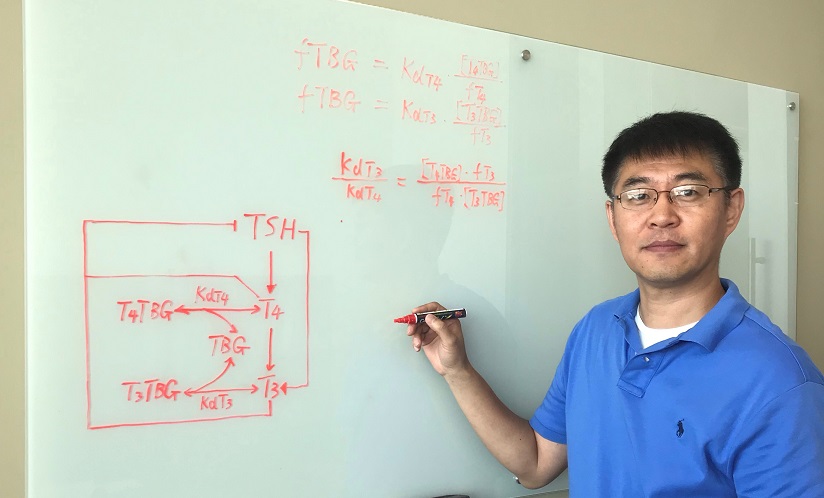Faculty Recognized for Outstanding Paper by the Society of Toxicology

by Priyam Patel
Qiang Zhang, associate professor of environmental health, at the Emory Rollins School of Public Health was recognized with the Best Published Paper Demonstrating an Application of Risk Assessment award by the Risk Assessment Specialty Section of the Society of Toxicology earlier this year for his article “Bridging the Data Gap from in vitro Toxicity Testing to Chemical Safety Assessment through Computational Modeling” published in Frontiers in Public Health in 2018.
Over the past decade, chemical toxicity testing has shifted from animal-based in vivo testing methods to cell culture-based in vitro approaches due to the scientific advantages, efficiency, lower costs, and ethical benefits of not using laboratory animals for testing. While this shift is scientifically promising, it is challenging to produce practical results from in vitro testing alone due to the scale and environmental issues associated with testing at the cellular level. In vitro testing struggles to reproduce the physiological environment and real-world exposures that can be applied in vivo, and as a result, there are data gaps that make it challenging to extrapolate and translate in vitro findings into real-world health outcomes. As chemical toxicity testing moves steadily toward an in vitro approach, these fundamental data challenges could prevent researchers from making use of such testing data to inform human health risks under adverse environmental exposures.
In his awarding-winning paper, Zhang delves into these challenges and lays out a framework that uses computational modeling of chemical toxicokinetics and toxicodynamics to address many of them. The proposed computational modeling techniques could be used to complement in vitro data and support in vivo extrapolation, which would allow researchers to make more reliable risk assessments of chemical exposures. While computational modeling does come with its own challenges, successfully combining the in vitro and in silico methodologies will have far-reaching implications for population-based and personalized risk assessments in the future.


